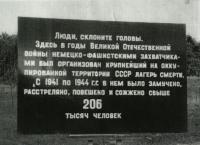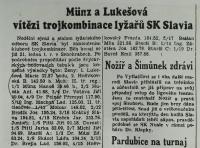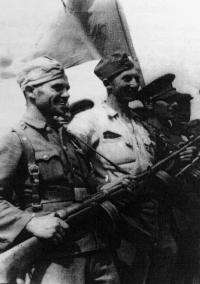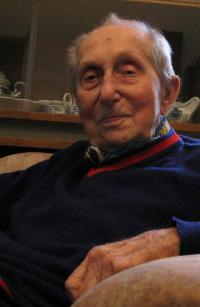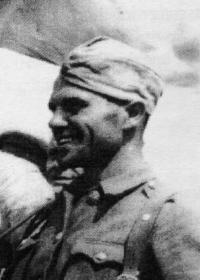Thereienstadt - it was like a holiday resort in comparison with the concentration camps where a thousand people disappeared in a while
Hanuš Münz was born on April 13, 1910. Since his childhood he has been a sporty person - devoting all his time to sports. At home they did not speak about religion much so he didn‘t realise his Jewish identity until after the Protectorate of Bohemia and Moravia had been established and when the so-called Nuremberg Laws came into force. At that time he considered leaving for Denmark, however he eventually decided to stay at home because of his mother. In 1941 he was ordered to leave for Theresienstadt where he worked in the former brewery. In the Spring of 1942 he was given a job in the mines in Kladno - he notified his friends about this and they arrived by bikes to visit him. However, somebody reported this information to the police and Hanuš and his friends were arrested by the Gestapo. They were then interrogated in a Gestapo office in Kladno for several days and then they had to unload coal wagos at the station. After two months they were sent back to Theresienstadt. But the next day they were escorted to the railway station and transported to Volkovysk in Belarus (near the border with Lituania). There, they had to load baggage into empty wagons. At the next stop only the best craftsmen were selected and Hanuš was very lucky to say that he was a fitter, as the remaining one-thousand Jews were killed in gas vans. Hans Münz, and the others who survived, were taken to the Malý Trostinec concentration camp and went to work in war-stricken Minsk. With help from Slovak soldiers in August, 1943, Hanuš and one of his friends, a Czech prisoner named Leon, managed to escape and join the guerrillas. His group was able to destroy three trains and several lorries by means of explosives. When they got to the front they were ordered to kill groups of Germans who remained behind the front in Russian territory. After they had participated in the great guerillas parade in Minsk, nobody knew what to do with them. Finally, on July 19, 1944, they were sent to Dzerzinsk where the should have gone to a „vojkomat“ - military commissariat. They insisted on being sent to the Czech army, but they were sent to the 173rd Rgt. of the Belarus army. When their captain was fed up with them, they were sent back to Minsk, and there it was decided that most of the Czechoslovaks would go to Tula, where they were to join the Czech army. Nevertheless, Hanuš Münz had to stay because they were planning to transport him to Slovakia to join there the Slovak National Uprising. However, that did not happen and he managed to get to Czechoslovakia in late August, 1945. On the day of his return, he met Eva Leisnerová and he married her on January 25, 1947. After the war he worked as a dentist, and according to him, understood the communist plan immediately after 1953 when he lost about one hundred thousand crowns due to the currency reform program. He was also never given any war reparation which had been promised to him. He died on February 16th, 2010.

